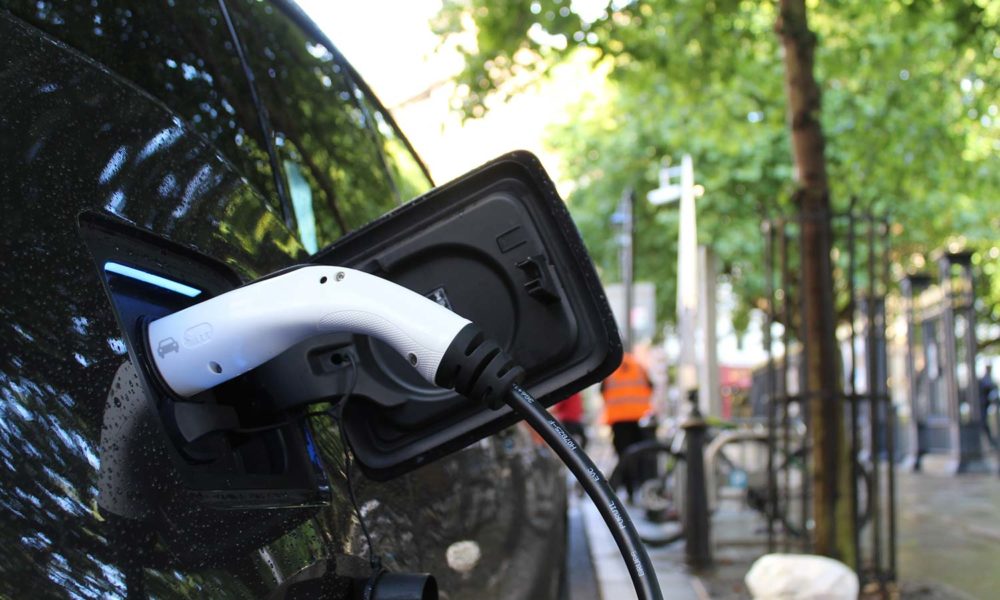California is already seeing the impact of climate change, with droughts, heat waves, and of course the unprecedented wildfires seen this summer. And even as the smoke from the fires has (mostly) cleared from the skies over much of the state, we know that we have to greatly reduce emissions to slow the rate of climate change. The largest single source of climate changing emissions in the state is transportation (more than 40% of anthropogenic emissions), so it’s not a surprise that California would look at accelerating the switch from petroleum-fueled cars and trucks to cleaner zero emissions vehicles (ZEVs).
If the state follows through on the recent announcement from California’s Governor Newsom setting a target of 100% zero emission new car sales by 2035 and other states and countries follow, we can avoid even worse impacts of climate change. California’s leadership is important as around 2 million new cars are sold each year in the state and over 26 million autos are registered in the state. And as the state grows, new car sales are will too, with the state estimating 16% growth in sales by 2035.
Why do we need to do this so quickly?
By the end of 2019, ZEVs made up about 8 percent of all new vehicles sold in California, or about 158,000 out of the 1.9 million cars and trucks sold last year. Moving to 100% ZEV sales in just 15 years’ time will require significant changes in the cars available for sale and expansion of the refueling and recharging infrastructure in the state.
But why do we need to get to 100% ZEV sales by 2035? We need to do this by 2035 to get emissions from transportation as close to zero as possible by 2045. Emissions reductions of this magnitude are needed to attempt to limit temperature rise to less than 2.7°F (1.5°C). Electrification of transportation also has air quality benefits. The American Lung Association recently estimated that switching to ZEVs in California would avoid $22 billion in health costs and avoid over 1,900 premature deaths by 2050.
Even getting to 100% ZEV sales as early as 2035 will still mean slightly less than 90% ZEVs on the road in 2045, assuming drivers replace and scrap gasoline vehicles at a rate similar to today. Despite moving this quickly to 100% ZEV sales, gasoline cars and trucks will make up almost half the cars on the road in 2035. And there will be classic cars and specialty vehicles that still will be driven well after the sales transition to electric drive. However, the vast majority of the miles driven by cars in the state will move away from gasoline and diesel. And the most important impact of this sales target is transforming our transportation system to clean vehicles and fuels. The emissions from a handful of remaining gasoline vehicles on the road as we approach mid-century will be minuscule compared to the pollution from today’s cars and trucks.

If all new cars sold in California are ZEVs by 2035, almost 90% of cars on the road will be ZEVs by 2045, assuming gasoline cars are not retired early. These charts reflect one possible scenario for getting to 100% ZEV sales by 2035 that assumes significant growth in sales between 2025 and 2030. This sales rate is consistent with projections of increasing ZEV model availability and decreasing ZEV costs by the middle of this decade. However, even moving this quickly means that just over half of cars on the road in 2035 will be ZEVs.
Fundamental changes are needed to protect our future
We don’t know exactly what ZEVs will look like in 2035. But what is known is that ZEVs are a critical and required solution to reducing air pollution and climate-changing emissions. We also know that many automakers will want to generate as much revenue as they can from the gasoline-fueled car technology that they have sold for decades and thus don’t have the short-term financial incentive to quickly move to electric vehicle sales. Unfortunately, as we have seen with drought, heat waves, wildfire and other climate change impacts in California and nationwide, we do not have time for a slow, multi-decade transition to ZEVs. Taking our time will negatively impact our health, the environment and our economy. We need to follow the science and enact policies that reflect the magnitude of the problem at hand, even if that means moving faster than some in the auto industry would like.
Transitioning to electric-drive passenger vehicles is a huge part of the solution to reduce pollution and the Governor’s order to end combustion engine sales in passenger vehicles in 15 years is a bold step. But we also need California to set strong zero-emission vehicle requirements for ride-hailing companies, strengthen standards for passenger vehicles in the interim, prioritize electric trucks and buses in communities most affected by air pollution, and make the necessary investments to support walking and biking infrastructure and robust public transit options. It’s not just about replacing gasoline cars with electric versions, but rather the need to rethink the entire transportation system to reduce emissions both with cleaner technology and getting people out of cars altogether.
California has a long history of protecting its people by limiting polluters and requiring manufacturers to adopt cleaner alternatives. Now more than ever, the state needs to use its global leadership to protect the health of all Californians now and in the future, and a 100% ZEV sales target is a great example of how California can show the way to a cleaner and safer future.

